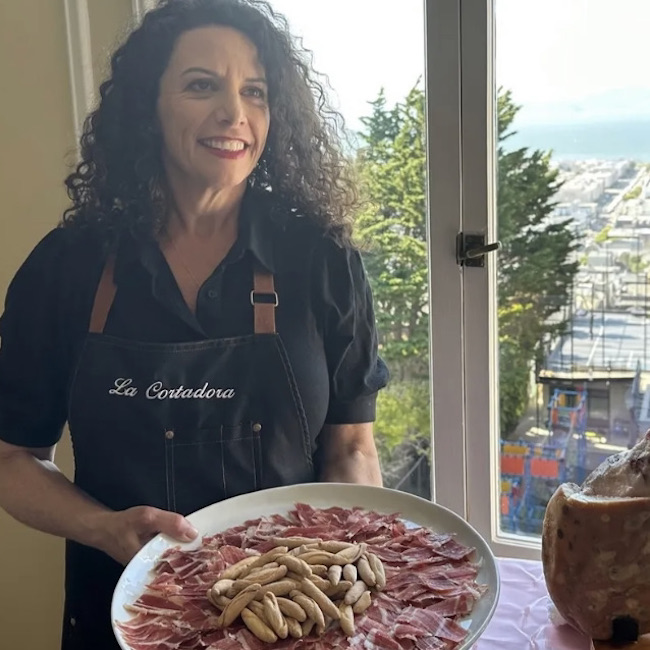.png.transform/rendition-xs/image_image%20(1).png)
Meet Jen Herman, Only Female Certified Ham Carver in the US
Carving an Ibérico requires training and skill as these help accentuate the ham’s colors, marbling, and complex and unique flavors
Many people don’t know this, but ham carving is an absolute art and not something that just anyone can do. It requires skill, technique, and a deep understanding of the product. As a result, master ham carvers require significant training before they’re able to successfully and skillfully carve a jamón Ibérico.
In the US at present, there’s only one certified female ham carver: Jen Herman. After living abroad in Barcelona, Jen returned to San Francisco but always felt compelled to return to Spain. During the pandemic, she returned and officially became a trained ham carver with the Asociación Nacional de Cortadores de Jamón.
Now she has opened a business, La Cortadora, in the Bay Area and is getting booked through friends and family, event planners, and industry contacts. She sources her 17-pound ham legs from a Spanish producer in Salamanca.

The way jamón Ibérico is carved into ultra-thin slices is very important as it reveals its unique and delicious qualities and highlights its complex flavors, colors, and marbling. It is also important to know the different parts of jamón Ibérico -maza, caña, babilla, jarrete, punta or contra- because each of them needs a certain cut and often the ham carver needs to switch from jamonero knife to other tools as puntilla for cuts and insert around the bone or a stronger knife to clean the outer layer.
Professional ham carvers who attend events and carve the ham life inevitably draw crowds of people, eager to watch and let it melt in their mouths. Interest in Spain’s jamón Ibérico is on the rise. According to sfchronicle.com and the US Department of Agriculture Foreign Agricultural Service, imports of Spanish bone-in jamón in the US more than tripled between 2012 and 2022.
